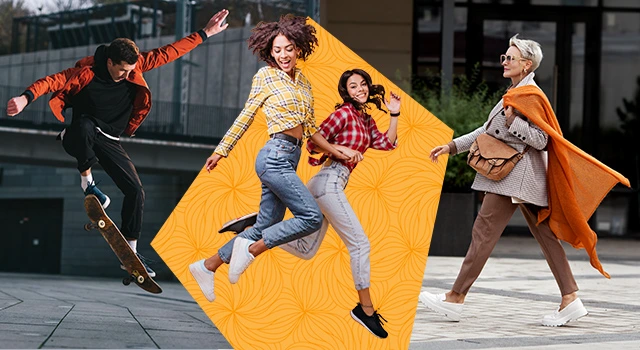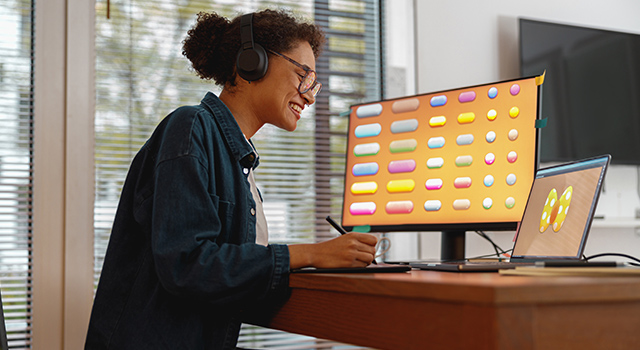The difference between an artist and graphic designer – While the two may have similar crossovers, the fields themselves are very different. However, what happens when the artist and designer are one in the same? How does this affect their work on both sides? Let’s take a closer look at the differences between art and design, then how they affect, influence, and even one inspires the other.
How Art and Design Differ
Art and design have a similar thread that runs through them, yet they will almost always have vastly different motivations. One is inspired by a need to express something, the other by the desire to communicate a pre-determined message. Can you guess which one is which? While their functions certainly differ, other aspects deviate as well. Let’s take a look at them all.
- Spark of Inspiration – When an artist has a spark of inspiration, it’s typically in the form of a creative urge to express something important to them in a new way. For the designer, their spark of inspiration is most often dictated to them—typically from a client’s creative brief, and utilizing their call to action, or pre-existing message.
- Translation – Understanding is the basis for both art and design. However, it’s the translation which separates the two. Art seeks to have you, the viewer, interpret the message in a way that resonates with you—and it rarely has one important meaning. Design, on the other hand, seeks to be immediately understood—with a clear and concise message.
- Taste – Most artists will have a style they adhere to—based on their personal Very rarely will they delve into an area of art they don’t appreciate. However, a great designer may be required to design something that goes against their taste—and still produce fantastic results.
- Talent Skill – Arguably, both artists and designers require both talent, and technical skill in their craft. However, most artists come with an innate gift to interpret information and output it in a personal style that resonates with their audience. Most of the time, this talent isn’t taught—it’s inherent in them and comes from their trial and error. Designers, on the flipside, while having an eye for the craft, are taught the skills needed to be phenomenal at their job. Most can’t simply pick up a powerhouse program, such as Photoshop, and immediately know how to run with it, as an example. Add in the myriad of other technical aspects, such as the grid, typography, etc. and you can see why most designers are forged through technical skill while enhancing their craft with an innate ability. Artists, on the other hand, require only their talent to carry them through.
How Art and Design Inspire Each Other
As we just discussed, when it comes to great design or phenomenal art, each comes down to the talent and skill of the person at the helm. However, each can be inspired by the talent of the other—spurring on new and reimagined art and design. This is true when a designer is leaning on the talent of an artist, or when they, themselves, are the artist (and vice versa). Here are some ways art and design inspire each other in a creativity loop:
- Artistic creativity – When a designer is also an artist, one of the most basic skills they bring to the table is their ability to look at the world through a creative lens. They approach design problems with a sense of wonder, and a knowing that a creative solution is just around the corner.
- Conscious Use of Grids – As an artist becomes more skilled in the training of graphic design, things such as grids and the Gestalt Principles can be consciously applied to their fine art, as well as their graphic designs. For many artists, these principles may be hit and miss, or happen quite by accident, without having this knowledge in their back pocket.
- Humanity Inspired – Art leans heavily on the experiences of the artist. It bases its message on conveying information, a viewpoint, state of mind, a feeling, etc. Those with an art background will find themselves inspired to design for people, not just for other designers. There is such a thing as designing something to be too regimented. The artist in the designer helps to harness the emotions that could be lost in translation when design overpowers the message. At the end of the day, the audience is simply people and designs need to embrace that.
- Mixed media art & design – In probably the greatest trend happening this past decade, artists and designers can showcase both talent and skillsets by mixing their two mediums. Graphic design has taken up a much more organic feel over the years, leaning on those who can design with an artist’s eye.
Ultimately, the two are categorically linked in the realm of communication art—so trying to pigeon-hole either into a single purpose is like trying to grasp at straws. Both art and design can move people, as well as make them think. They can inspire one another, as well as communicate effectively. When a designer is an artist, and vice versa, both their design and art are enhanced with their expanded knowledge of both.
At Artwork Abode, our designers are very often artists—creating visual pieces that go above and beyond the confines of our offices. We feel this gives us (and them) a creative edge by having the gift of a creative eye—something not all designers innately have. If you’d like to talk about how we encourage our artist designers to express their creativity in our current design process, contact us today. We’d love to show you our portfolio and talk about your upcoming design needs—and how our artist designers will exceed your expectations.
– Artwork Abode




